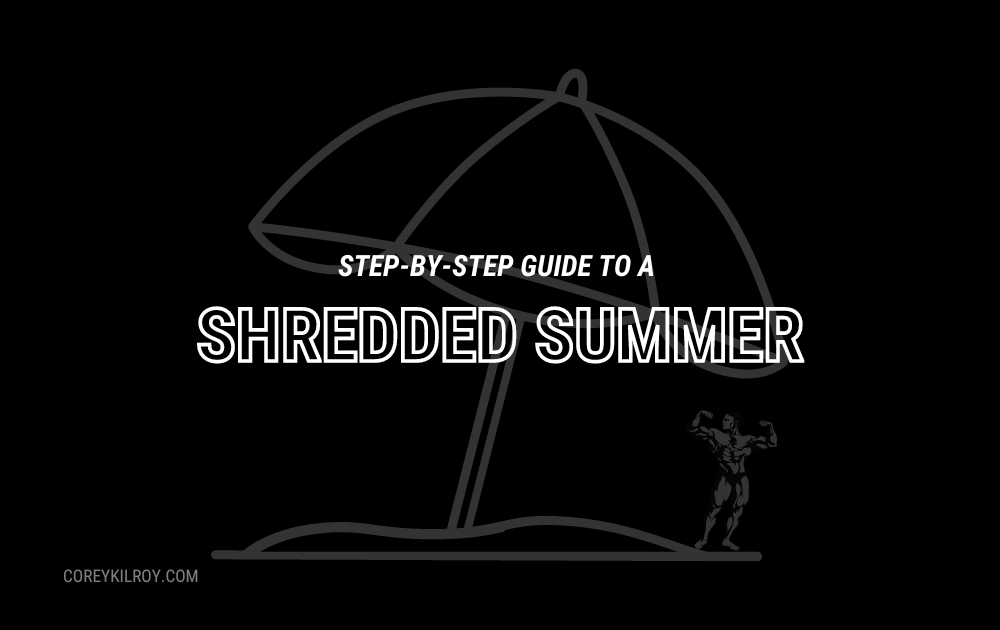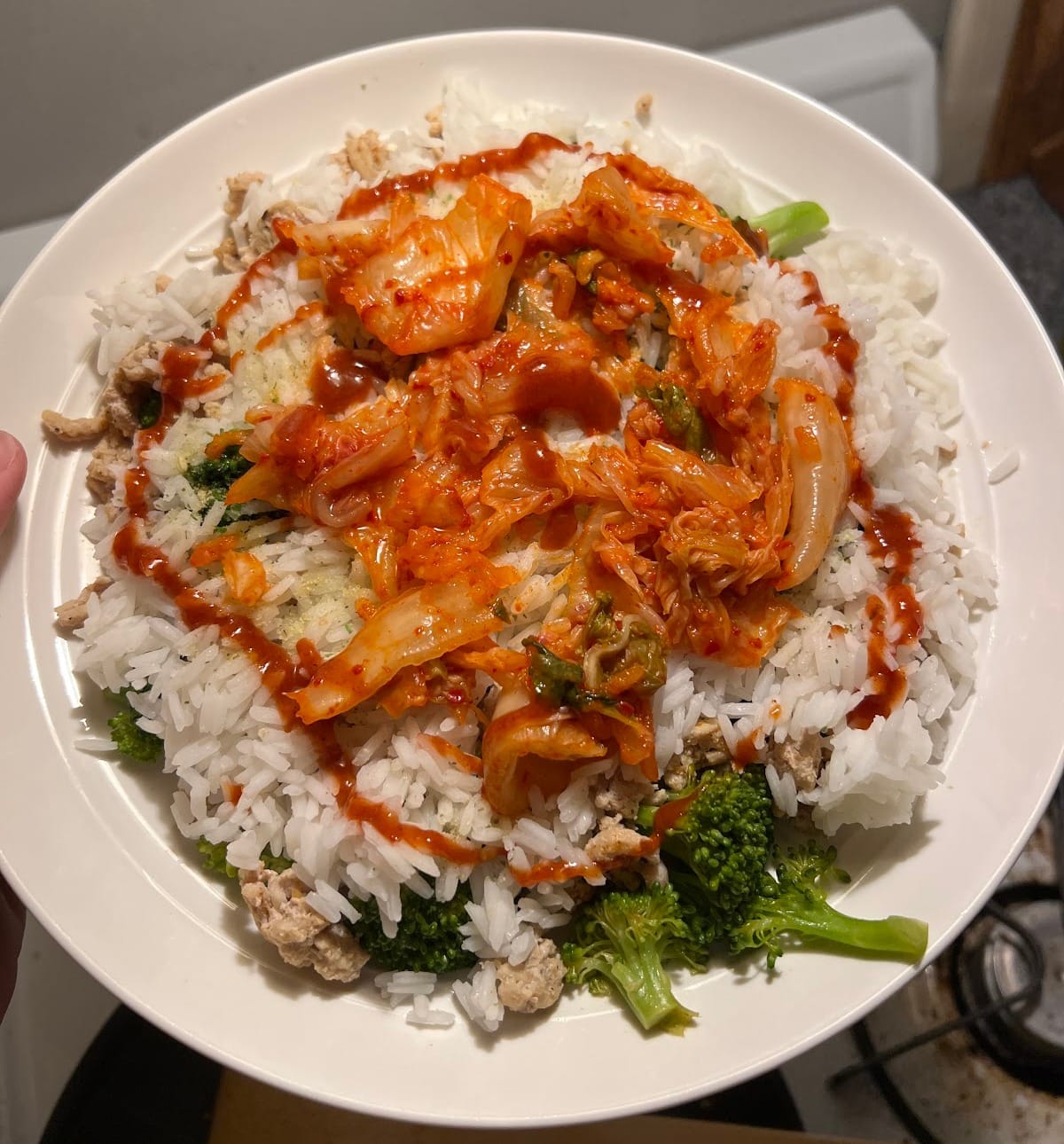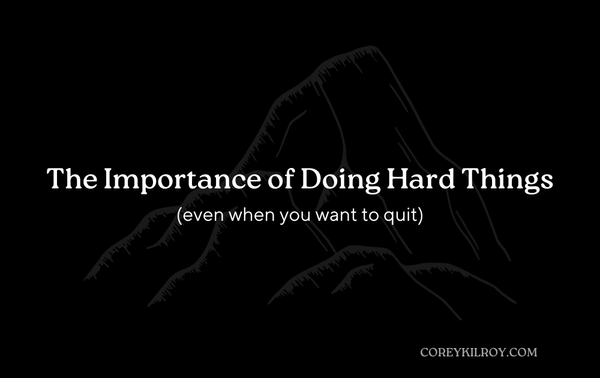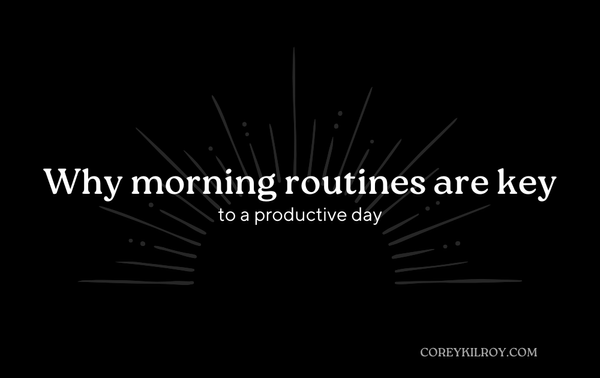Your Step-By-Step Guide To Getting in Shape For Summer

Summer is fast approaching, and if you haven’t started your New Year's Resolution yet, then now is the time to redeem yourself.
Losing weight and getting shredded is not easy… nor is it fun at times.
But the reward of being happy with how you look in the mirror and how you feel mentally and physically makes it all worth it.
I’ve personally gone from a skinny-fat college student to a guy with a respectable muscle-to-weight ratio (I mean… I like to tell myself that).
If I were to give you some steps that I’ve used to get these results, here’s what they’d be.
1. Get comfortable tracking Results
Peter Drucker says it best, “what you measure is what you manage”.
If you want to see results, you need to track 3 things:
- Your weight
- Your “inches”
- Picture proof
This is the Breakthrough Big 3.
If you wanted to look at the health of a business, you're not solely looking at the top line of revenue, are you?
You can’t rely too much on just tracking your weight because it’s only one unit of measure, and your weight can fluctuate 5+ pounds day-to-day.
You want to track the Breakthrough Big 3 regularly to get a clear picture of your overall progress.
If it were me or someone I’m advising, I would weigh myself 3-7 times a week getting a weekly average of my weight.
I would then measure my chest, waist, and hip, in inches, on the same day every week (like every Friday or something).
Then, I'd do pictures every 4 weeks as visual proof of progress.
Lastly, this is optional but I would get a DEXA scan and do bloodwork in the beginning to get a clear picture of my health both inside and out.
2. Create a SMART Goal
You realistically aren’t going to accomplish your “shredded Summer” without properly planning a goal for yourself.
One of my favorite ways to set goals for myself is by using S.M.A.R.T. goals.
SMART Goals are statements of specificity that explain what you are working to accomplish. It can be broken down by the mnemonic – well, you guessed it… SMART:
- Specific - What will be accomplished? What actions will you take?
- Measurable - What data will measure the goal? How much? How well?
- Achievable - Is the goal doable? Do you have the necessary resources to accomplish this?
- Relevant - How does the goal align with broader goals? Why is the result important?
- Time-Bound - What’s the time frame for accomplishing this goal?
3. Eat proper foods at proper times
“Abs are made in the kitchen” isn’t a cliché saying for no reason.
Food is fuel and it ultimately becomes the deciding factor for your weight loss and weight gain.
There are 3 distinctive things that we should focus on with nutrition:
- Eat the right quality of food to regulate hormones, appetite, and energy levels.
- Eat the right amount of food for you to get lean.
- Eat at similar times of the day to put your appetite and circadian rhythm on a schedule.
To eat the right amount of food you could use the Mifflin-St Jeor equation to calculate resting metabolic rate (RMR) - which is defined as the number of calories your body uses while the body is in complete rest.
Orrrrr… you could just use this website to calculate those “maintenance calories” for you.
This isn’t an affiliate link, it’s just what I, personally, use because I’m lazy and only need a rough estimate of my maintenance calories.
Obviously yes, this is a rough estimate, but this maintenance calorie number will be the number you refer to when tracking your foods day-to-day.
Also yes, in order to lose weight you must eat in a caloric deficit, which requires tracking your food.
Since we’re trying to get mean and lean, aim for 200-300 calories below your maintenance calories every day.
In terms of eating the right quality of food:
- Aim to eat at least 0.8 - 1 gram of protein per pound (lb) of body weight because this is crucial for keeping muscle, feeling fuller, and burning fat. I talk about Why You Should Be Consuming More Protein here.
- Get 80-90% of your calories from single-ingredient, nutrient-dense foods. So no, you cannot simply live off of creatine and protein shakes, sorry.
Lastly, to find the right meal schedule, I recommend following your circadian rhythm and eating around that, which means timing your meals around different points of the day, at the same time, every day.
For me, this means:
6:30 AM: A high-protein, high-fat, breakfast right before work. (Eggs, spinach, avocado + Food for Life English Muffin)
12 PM: A nutrient-dense lunch. (Quinoa, Ground beef, shredded carrot, sweet potato, broccoli)
4:00 PM: A high-carb snack right before the gym (Fruit and protein-overnight oats)
7:00 PM: Nutrient-dense dinner. (Rice, ground meat, green veggies, kimchi)
Here’s an example of what my dinner looks like:

4. Resistance training at least 3x a week.
The goal here is to lose fat, not muscle.
This is why we prioritize eating a high-protein diet and strength training.
The more muscle mass you have, the higher your metabolic rate tends to be.
What does this mean? The more muscle you have, the more likely you are to burn more fat than muscle.
That’s why the myth of hyperfocusing on cardio is wrong.
Yes, cardio will burn calories and is extremely helpful for our cardiovascular health. However, without the addition of weight training, we end up losing muscle in the process.
No thanks…
If you’re tight on time, try squeezing in a 45 min - 1 hour full-body workout at least 3 times per week. This will cover each muscle group and save you some time throughout the week.
5. Recovery is key.
Sleep and recovery is the key to vitality and health.
You can run marathons and lift all of the weight in the world, but none of that means anything without proper recovery and sleep.
Quality sleep helps you maintain energy and even reduces your appetite throughout the day.
Sleep also changes the cellular structure in the brain and plays a critical role in beta-amyloid clean up - this ultimately means sleep plays a role in cleaning all of the “junk” from your brain, resulting in a clearer mind and energy output.
Sleep is the most underrated element in dropping body fat.
Your body needs sleep and recovery to prime itself for higher performance, ultimately leading to better results in the gym.
Aim for at least 7-9 hours of sleep every night.
6. Motion is lotion.
You can bust your ass in the gym for an hour and sleep 8 hours soundly at night, but if you’re not maintaining the lifestyle in the other 15 hours of the day, then what’s the point?
You don’t need to be on a treadmill 24/7 like a hamster, but aiming for 8-10k steps a day through various methods can do the trick.
Many of us work jobs that require extended periods of sitting and this is a “no-go” for us humans - Bad posture, tight hips, rolled shoulders, the list goes on.
To promote fat loss and prevent injury, try to stay moving throughout the day.
Take the stairs instead of the elevator, take lunch break walks and post-dinner walks, or try walking meetings if your job depends on Zoom.
Walking is another highly underrated element for fat loss because it’s low impact and can even help you speed up recovery from the day's gym sesh.
It also de-stresses your mind and body, which is another major benefit to fat loss.
If you want extra brownie points, try walking outside more.
Being outside in nature is vastly beneficial for us, especially now that we’re surrounded by a concrete jungle throughout the day.
Honorable Mentions:
- I would eliminate all forms of snacking and mindless calories. The liquid calories from your sugary Starbucks drink or mindless calories from snacks throughout the day quickly add up and can lead to a calorie surplus very easily.
- If you find yourself being hungry and snacking often, then be sure to prioritize protein intake!
- Stay hydrated! Hydration is key to keeping digestion flowing smoothly and preventing muscle cramps or issues down the line. Every day aim for:
- Men: 15.5 cups (3.7 liters) / day
- Women: 11.5 cups (2.7 liters) / day
In the end…
Getting in shape for the Summer is a great reason to start prioritizing your health more, but you must remember that getting in shape is a process.
As you master these 6 steps, start identifying what habits you’re creating so you can continue them beyond the summer.
Health and fitness is a lifestyle, not a one-and-done deal.
Use the Summer as motivation for what it is but remember that staying fit is about changing your identity.
If you have any questions, don’t be afraid to reply to this email or shoot me a message on Instagram.
Be well and KEEP PLUGGIN.
-C.



